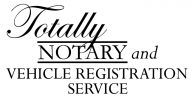As a mobile notary, I often travel to the homes of clients to notarize their real estate documents or estate planning trusts.
This particular day, I was returning to a trust client’s home for a quick grant deed notarization. I had met with the client the previous week, but the document had been missing a critical page. The estate planning firm had emailed the page to the client and it was now ready for notarization.
Imagine my surprise when I arrived and realized that the client had invited a friend and his wife to join us who needed three grant deeds notarized as well!
I was happy to assist them and fortunately I didn’t have any time constraints. I notarized my client’s deed and then reviewed his friend’s documents.
Rather than have an attorney draft his grant deeds, the friend had used one of his own existing deeds as a template and created the documents in Microsoft Word.
Unknowingly, he had made a few errors when preparing the notarial acknowledgments:
Prior to January 1, 2015, a California notarial acknowledgment had the following format:
State of California
County of _______________ (where the notarization is taking place)
On _______(date) before me, ___________(notary’s name), Notary Public, personally appeared ____________________ who proved to me on the basis of satisfactory evidence to be the person(s) whose name(s) is/are subscribed to the within instrument and acknowledged to me that he/she/they executed the same in his/her/their authorized capacity(ies), and that by his/her/their signature(s) on the instrument the person(s), or the entity upon behalf of which the person(s) acted, executed the instrument. I certify under Penalty of Perjury under the laws of the State of California that the foregoing paragraph is true and correct.
Witness My Hand and Official Seal
- First, he had pre-populated the county fields based on where the properties were located, not where the notarization was occurring.
- Second, he also eliminated the gender specific and singular pronoun options in the verbiage which didn’t apply in his situation. In California, the Certificate of Acknowledgment form must have prescribed verbiage which includes gender and pronoun options. The notary is responsible for making the determinations and crossing out those options that do not apply.
- Lastly, there were two spelling errors in the notarial verbiage.
As the documents had been created in Word, the friend was able to have someone at his home email them over to him so he could edit them and reprint.
The quick notarization I had anticipated finally concluded an hour later. The clients were happy with the service and I’m confident that their documents will be recorded successfully.
Updated 06/2018
Since this entry, I have come across many notarial certificates where the document originator has pre-selected the gender and pronouns of the signer. I was taught that it is the notary’s responsibility to cross out the inapplicable gender and pronouns, but decided to consult the California Secretary of State Notary Section in Sacramento for clarification. Their determination was that the removal of the extra pronouns and inapplicable gender did not change the certificate in a substantive way and therefore, it would be permissible to use it.
©2014 Totally Notary All Rights Reserved


Leave A Comment